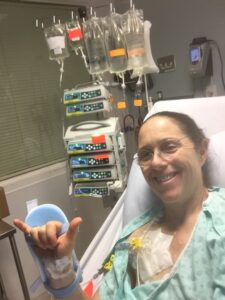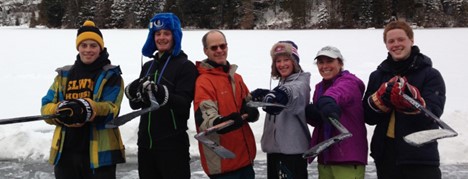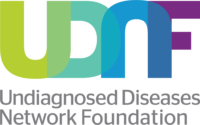24 Jan Ingrid Kovitch
 Like so many in the Rare and Undiagnosed Disease community, my story begins with… surprise. For some it was an unexpected pregnancy complication. For others, a missed milestone, some insidious decline, or a dramatic medical crisis. And in the blink of an eye our hopes and dreams were abruptly shattered, only to be replaced by uncertainty, fear and anguish.
Like so many in the Rare and Undiagnosed Disease community, my story begins with… surprise. For some it was an unexpected pregnancy complication. For others, a missed milestone, some insidious decline, or a dramatic medical crisis. And in the blink of an eye our hopes and dreams were abruptly shattered, only to be replaced by uncertainty, fear and anguish.
I was luckier than most. I was in my late forties and had a fantastic family, a rich and supportive social network, and a rewarding career. I had always enjoyed terrific health and was relentlessly (some might argue frenetically!) active. I played on two varsity teams in college and continued with triathlons, marathons and other high-level sports into my forties. But suddenly my body, which I had always taken for granted as formidable—even limitless—began to falter. I developed muscle weakness that first manifest as the inability to keep up while playing hockey with a group of men. You can be sure that symptom did not elicit much concern from doctors! (“There, there, sweetheart. Maybe you should come to terms with getting older.”)
My weakness and clumsiness progressed fairly quickly and soon I was tripping, falling down stairs, and struggling with simple activities. I began having seizures, double vision, developed cancer, and had dysfunction of blood, kidneys and other organs. I had a cardiac arrest, which I was lucky to survive! My breathing muscles became particularly weak, and within a year my lung volumes shrunk to one third normal and I required a ventilator at night. But most terrifying of all were dramatic and lethal metabolic crises that came on in under an hour, and that left me intubated in the ICU on an almost monthly basis.
A muscle biopsy confirmed severe muscle disease, but it was not specifically diagnostic. Scores of other tests were done and scores of abnormal results accumulated: blood and urine profiles, enzymatic assays, imaging studies, spinal taps, EMGs, etc. Despite the involvement of a motivated local team of very brilliant physicians, all remained confounded and unable to synthesize the peculiar constellation of symptoms into any single, unifying diagnosis. But the most horrifying part of my disease was not its inexorable progression, nor even the need to confront my imminent mortality. It was the inescapable torment (and yes, guilt!) regarding the genetic basis for the condition, the implications for my four children, and the dread over what their own futures might hold.
A close friend who had worked with colleagues at the NIH directed me to the UDN program. This was my opportunity to secure comprehensive genetic testing, something we were unable to accomplish at the time in my home town of Montreal, Canada. In the fall of 2015 I was assessed by an amazing care team at the NIH, and they have continued to be involved in my case since that time. Although we have not succeeded in establishing a definitive diagnosis, we have managed to unravel some components of the mystery. In doing so, we have succeeded—beyond my wildest expectations—to greatly improve my quality of life and to slow the rate of disease progression. And I firmly believe that more answers will continue to emerge, if not in time to help me, then hopefully in time for my children.
What the UDN offers patients like myself extends far beyond the obvious search for diagnosis and treatment. It offers a far more elusive gift; one that we struggle at times to find, and at other times to hang on to. One that we frequently abandon when caught in the throes of nihilistic despair. It offers HOPE. Hope for an answer of any sort and of any magnitude. Hope for some kind of insight to help us make sense of the nonsensical. And hope for the ability to render the unimaginable conceivable, and maybe even achievable.
For all of these things, I remain forever grateful.




